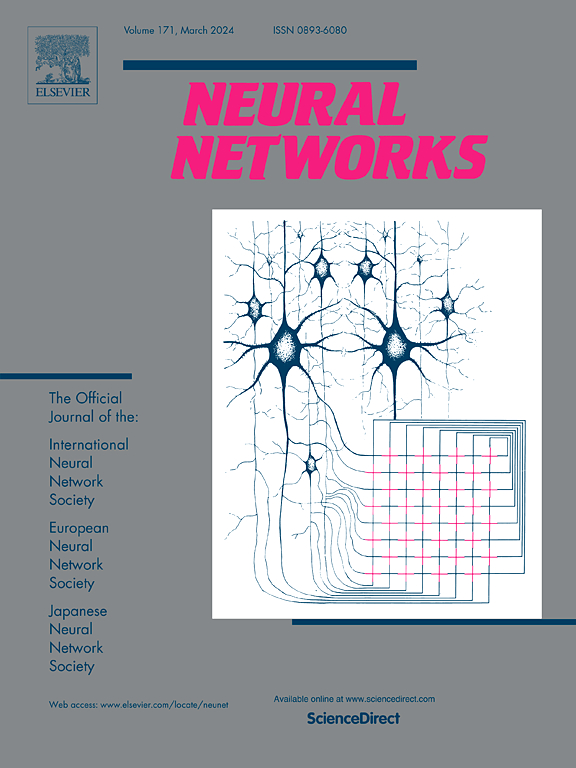探索更好的稀疏注释阴影检测
IF 6.3
1区 计算机科学
Q1 COMPUTER SCIENCE, ARTIFICIAL INTELLIGENCE
引用次数: 0
摘要
稀疏标注图像分割因其标注成本低而受到越来越多的关注。然而,现有的弱监督阴影检测方法需要复杂的训练过程,与全监督方法相比性能仍有很大差距。本文总结了当前稀疏标注阴影检测中的两个挑战,即弱监督扩散和结构恢复能力差,并试图缓解这两个挑战。为此,我们提出了一个单阶段弱监督学习框架,以促进稀疏注释阴影检测。具体来说,我们首先设计了一个简单而有效的语义亲和模块(SAM),利用梯度扩散方案自适应地将涂鸦监督传播到未标记区域。然后,为了更好地恢复阴影结构,我们引入了一种特征引导的边缘感知损失,它利用更高层次的语义关系来感知阴影边界,同时避免模糊区域的干扰。最后,我们提出了一种强度引导的结构一致性损失,以确保具有不同亮度的相同图像被预测为一致的阴影遮罩,这可以被视为一种自洽机制,以提高模型的泛化能力。在三个基准数据集上的实验结果表明,我们的方法明显优于以前的弱监督方法,与最近最先进的全监督方法相比,我们的方法取得了具有竞争力的性能。本文章由计算机程序翻译,如有差异,请以英文原文为准。
Exploring better sparsely annotated shadow detection
Sparsely annotated image segmentation has attracted increasing attention due to its low labeling cost. However, existing weakly-supervised shadow detection methods require complex training procedures, and there is still a significant performance gap compared to fully-supervised methods. This paper summarizes two current challenges in sparsely annotated shadow detection, i.e., weak supervision diffusion and poor structure recovery, and attempts to alleviate them. To this end, we propose a one-stage weakly-supervised learning framework to facilitate sparsely annotated shadow detection. Specifically, we first design a simple yet effective semantic affinity module (SAM) that adaptively propagates scribble supervision to unlabeled regions using a gradient diffusion scheme. Then, to better recover shadow structures, we introduce a feature-guided edge-aware loss, which leverages higher-level semantic relations to perceive shadow boundaries, while avoiding interference from ambiguous regions. Finally, we present an intensity-guided structure consistency loss to ensure that the same images with different brightness are predicted to be consistent shadow masks, which can be regarded as a self-consistent mechanism to improve the model’s generalization ability. Experimental results on three benchmark datasets demonstrate that our approach significantly outperforms previous weakly-supervised methods and achieves competitive performance in comparison to recent state-of-the-art fully-supervised methods.
求助全文
通过发布文献求助,成功后即可免费获取论文全文。
去求助
来源期刊

Neural Networks
工程技术-计算机:人工智能
CiteScore
13.90
自引率
7.70%
发文量
425
审稿时长
67 days
期刊介绍:
Neural Networks is a platform that aims to foster an international community of scholars and practitioners interested in neural networks, deep learning, and other approaches to artificial intelligence and machine learning. Our journal invites submissions covering various aspects of neural networks research, from computational neuroscience and cognitive modeling to mathematical analyses and engineering applications. By providing a forum for interdisciplinary discussions between biology and technology, we aim to encourage the development of biologically-inspired artificial intelligence.
 求助内容:
求助内容: 应助结果提醒方式:
应助结果提醒方式:


